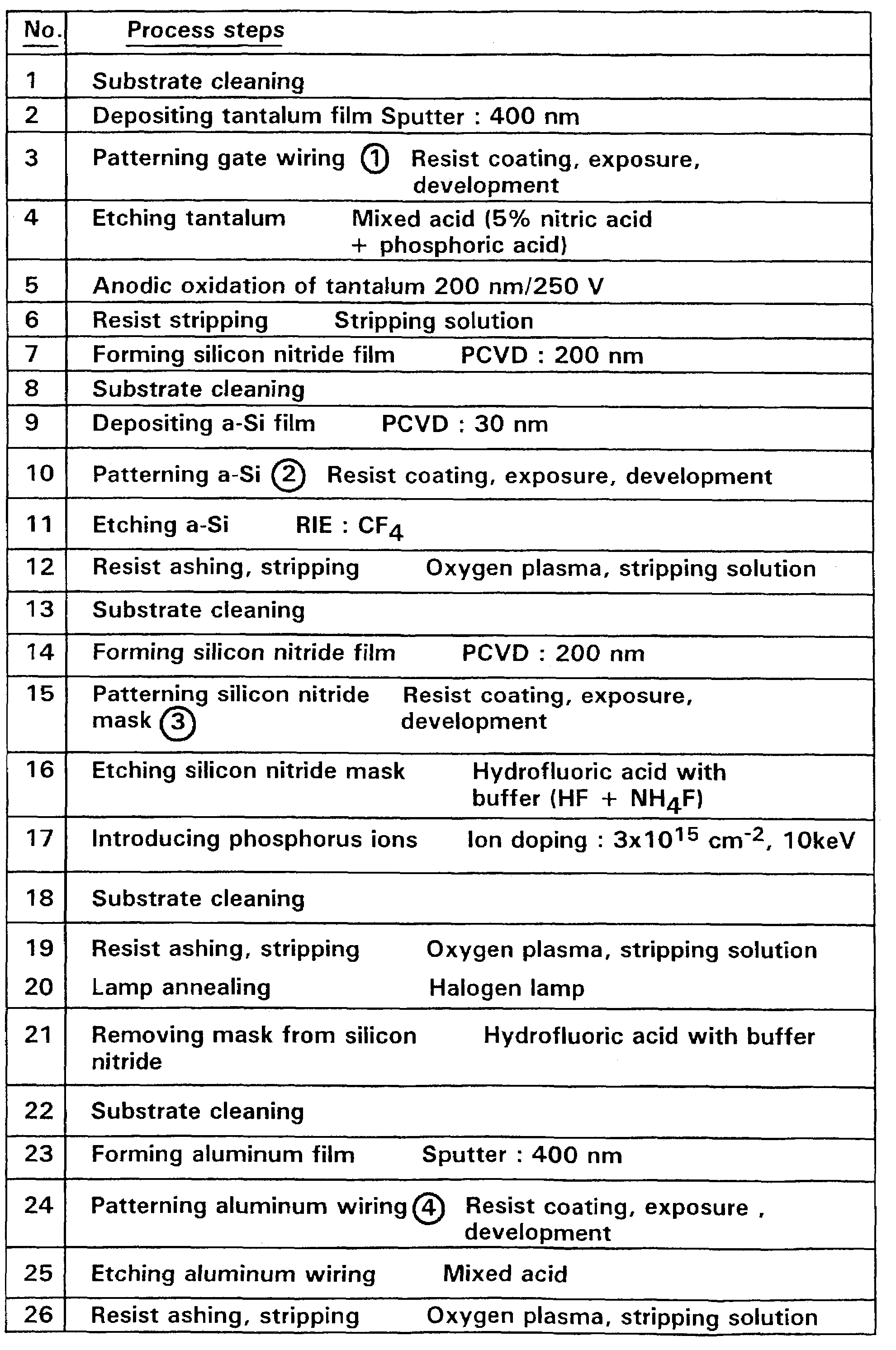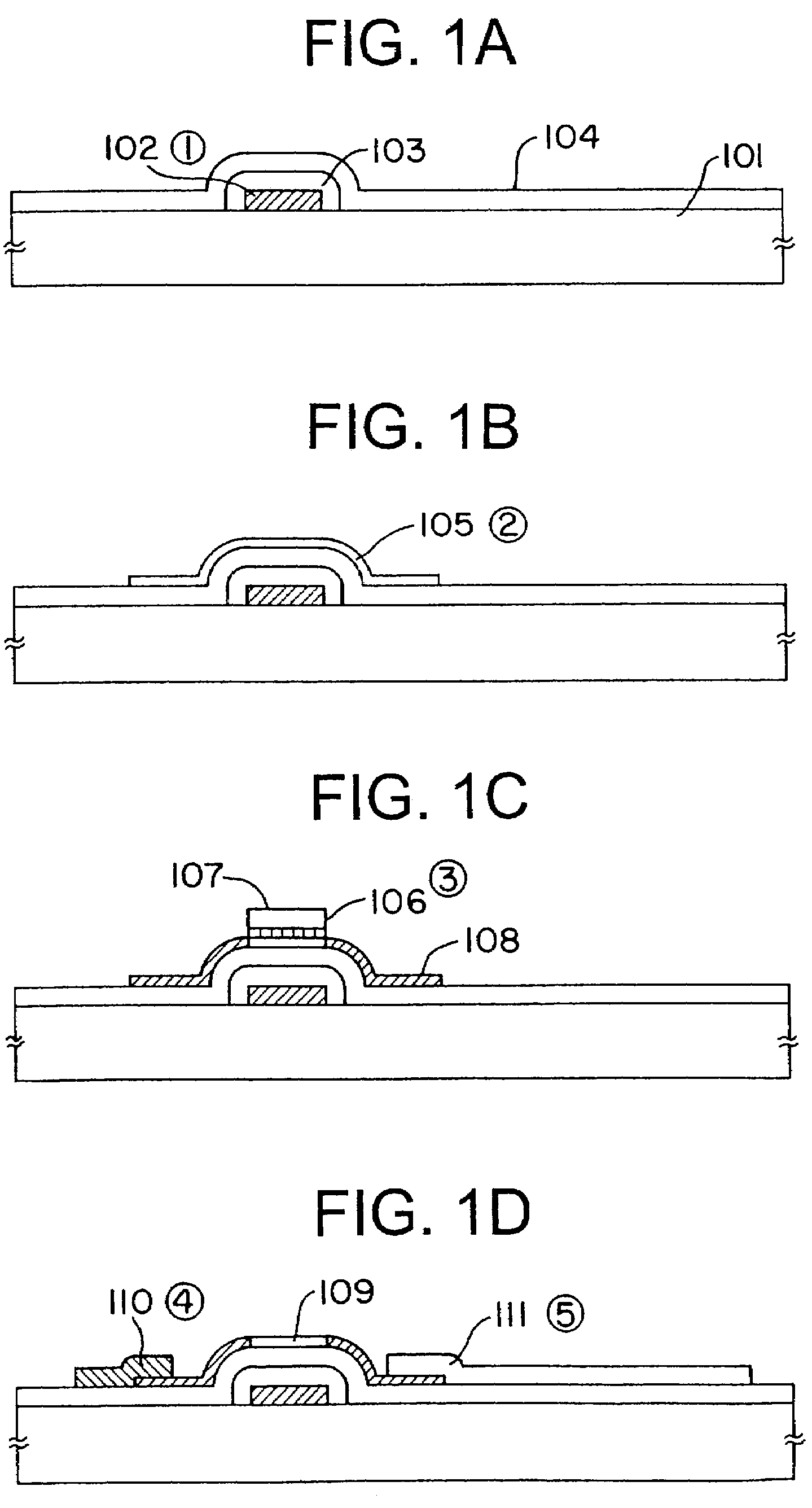Insulated gate semiconductor device and process for fabricating the same
a technology of semiconductor devices and insulated gate, which is applied in the direction of semiconductor devices, electrical devices, transistors, etc., can solve the problems of inability to continuously form the source/drain region, poor joint adhesiveness between the source/drain region and the channel forming region, etc., to achieve the effect of reducing the number of masks, improving yield and simplifying the process of manufacturing a semiconductor devi
- Summary
- Abstract
- Description
- Claims
- Application Information
AI Technical Summary
Benefits of technology
Problems solved by technology
Method used
Image
Examples
example 1
[0052]A TFT was fabricated according to the process steps listed in FIG. 3. FIGS. 1(A) to 1(D) show the schematically drawn step-sequential cross section structures obtained in a process for fabricating a TFT according to an embodiment of the present invention, up to the fabrication of the metal wiring and electrode 110. The step of forming an ITO pixel electrode 111 is not included in the figures. Referring to FIGS. 1(A) to 1(D), the surface of a tantalum gate electrode was coated with about 200 nm thick anodic oxide film in step 5 to improve the insulating properties. The anodic oxide film comprises an oxide of a material constituting the gate electrode. Impurities were doped by means of ion doping. Four masks in total were used in the entire process comprising 26 steps.
[0053]In FIGS. 3 to 6 hereinafter, “sputter”, “PCVD”, and “RIE” refer to a film deposition process using sputtering, a plasma CVD process, and a reactive ion etching process, respectively. The thickness of the depo...
example 2
[0065]A TFT was fabricated according to the process steps listed in FIG. 4. The process steps of the present example are essentially the same as those illustrated in FIGS. 1(A) to 1(D) except that the technique of light exposure from the back is used in the present case. Similar to the case in Example 1, FIG. 4 shows the steps up to the fabrication of the metal wiring and electrode 110. Referring to FIGS. 1(A) to 1(D), the surface of a tantalum gate electrode was coated with about 200 nm thick anodic oxide film in step 5 to improve the insulating properties. The silicon nitride mask was formed by the technique of light exposure from the back. Impurities were introduced by means of ion doping. The number of masks in total was reduced to three by employing the back side light exposure technique. Thus, the process comprises 26 steps.
[0066]A corresponding prior art process is illustrated in the process steps in FIG. 6. Three masks in total were used in the process, and the entire proces...
PUM
 Login to View More
Login to View More Abstract
Description
Claims
Application Information
 Login to View More
Login to View More - R&D
- Intellectual Property
- Life Sciences
- Materials
- Tech Scout
- Unparalleled Data Quality
- Higher Quality Content
- 60% Fewer Hallucinations
Browse by: Latest US Patents, China's latest patents, Technical Efficacy Thesaurus, Application Domain, Technology Topic, Popular Technical Reports.
© 2025 PatSnap. All rights reserved.Legal|Privacy policy|Modern Slavery Act Transparency Statement|Sitemap|About US| Contact US: help@patsnap.com



